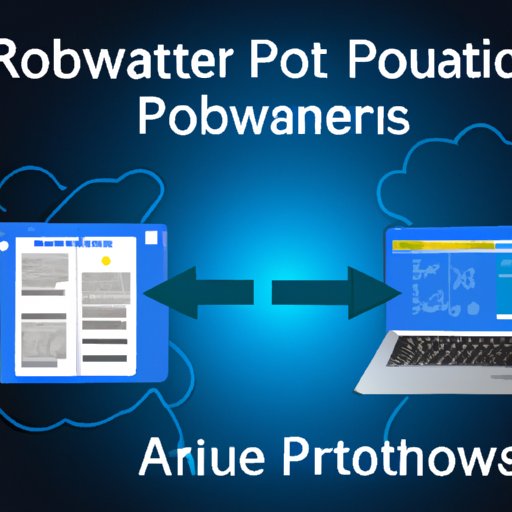Introduction
Power Automate is a cloud-based automation platform from Microsoft that enables businesses to quickly and easily create automated workflows. It offers an intuitive user interface, which makes it easy to configure and manage automated tasks and processes. With Power Automate, businesses can streamline their operations and increase productivity by automating mundane tasks and eliminating manual data entry.
What is Power Automate?
Power Automate is a cloud-based automation platform from Microsoft that enables businesses to quickly and easily create automated workflows. With Power Automate, users can create automated workflows that are triggered by events or conditions, such as an incoming email or a button click. Once triggered, these workflows can be configured to perform a variety of tasks, such as sending notifications, creating documents, or updating records in a database.
Power Automate also integrates with other Microsoft products, such as Office 365, Dynamics 365, and Azure, as well as with third-party services, including Salesforce, Dropbox, and Slack. This allows users to create complex, cross-platform workflows that can be deployed across multiple systems and applications.
Benefits of Power Automate for Businesses
Using Power Automate for automating business processes can help businesses save time and money. According to a study by McKinsey & Company, companies that use automation technologies can reduce labor costs by up to 30%. This is because automated processes are more efficient than manual processes, meaning they can get more done in less time.
In addition, Power Automate can help businesses become more agile. By automating mundane tasks, employees can focus on more important tasks, such as customer service, product development, and innovation. This can help businesses stay ahead of the competition and remain competitive in today’s rapidly changing market.

How to Use Power Automate for Automating Business Processes
Power Automate provides users with a range of features and capabilities to help them automate business processes. These include the ability to create custom triggers, add steps to a workflow, set conditions, and integrate with third-party services. Here are some tips for using Power Automate to automate business processes.
Overview of Power Automate Features and Capabilities
Power Automate provides users with a range of features and capabilities to help them automate business processes. These include the ability to create custom triggers, add steps to a workflow, set conditions, and integrate with third-party services. Power Automate also has a robust library of pre-built workflows, which can be used to quickly and easily set up automated processes.
Exploring the Different Types of Workflows Available with Power Automate
Power Automate offers a range of different types of workflows, from simple tasks to complex processes. These include approval processes, document management, customer onboarding, and more. Users can also create custom workflows to fit their specific needs. For example, they can create a workflow to automatically generate invoices or send notifications when a task is completed.
Integrating Power Automate with Third-Party Services
Power Automate can be integrated with a variety of third-party services, such as Salesforce, Dropbox, and Slack. This allows users to create complex, cross-platform workflows that can be deployed across multiple systems and applications. Integrating Power Automate with third-party services can also help businesses save time and money, as they no longer need to manually transfer data between systems.
Tips for Designing an Automation Solution with Power Automate
When designing an automation solution with Power Automate, it’s important to consider the different types of workflows available and the best way to integrate them with third-party services. It’s also important to consider the data that will be involved in the automation process and the security measures that need to be taken. Additionally, users should make sure to test the automation solution thoroughly before deploying it in production.
Best Practices for Using Power Automate in the Workplace
When using Power Automate in the workplace, there are several best practices to keep in mind. First, it’s important to ensure that all team members understand how to use the platform and are aware of any potential risks associated with automating processes. Additionally, it’s important to regularly monitor and review the automation solutions to ensure that they are performing as expected and to make adjustments as needed. Finally, it’s important to ensure that the automation solutions are secure and compliant with all applicable laws and regulations.
Conclusion
Power Automate is a powerful automation platform that enables businesses to quickly and easily create automated workflows. It offers an intuitive user interface, which makes it easy to configure and manage automated tasks and processes. With Power Automate, businesses can streamline their operations and increase productivity by automating mundane tasks and eliminating manual data entry. Additionally, Power Automate can be integrated with third-party services, allowing users to create complex, cross-platform workflows. By following best practices and understanding the different types of workflows available, businesses can leverage Power Automate to improve their operations and increase their efficiency.
(Note: Is this article not meeting your expectations? Do you have knowledge or insights to share? Unlock new opportunities and expand your reach by joining our authors team. Click Registration to join us and share your expertise with our readers.)
